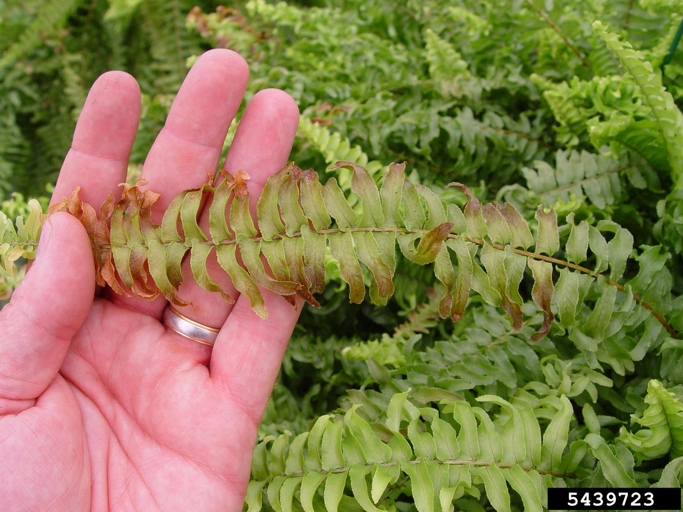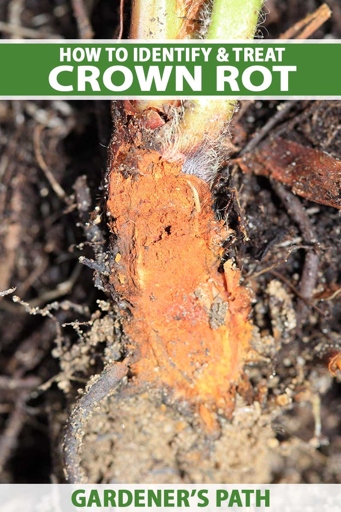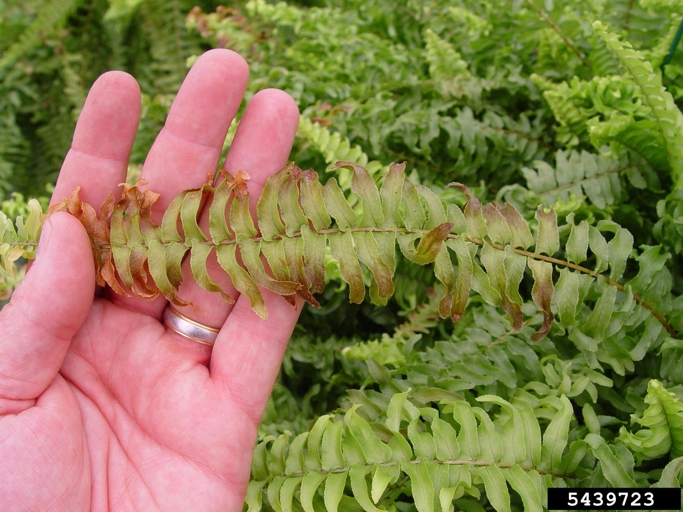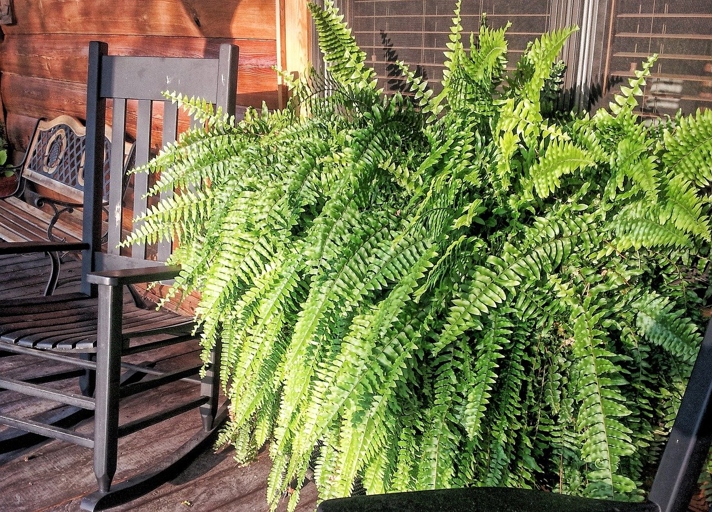If your fern is looking wilted, droopy, and generally unhealthy, it may be a sign that it is overwatered. When a fern is overwatered, the roots are suffocated and can’t get the oxygen they need to survive. This can lead to root rot, which is fatal to the plant. There are a few things you can do to revive an overwatered fern, but it is important to catch the problem early.
Signs of underwatered vs Overwatered Ferns
Ferns are a popular houseplant because they are easy to care for and add a touch of greenery to any room. However, ferns can be sensitive to watering and it is important to know the signs of underwatered and overwatered ferns.
Underwatered ferns will have wilted, dry, and brown leaves. If you think your fern is underwatered, water it immediately and then check the soil to make sure it is draining properly. The leaves will also be drooping.

If you think your fern is overwatered, stop watering it and check the soil to make sure it is draining properly. Overwatered ferns will have yellow or brown leaves that are wilted and mushy. The leaves may also be falling off. You may also need to repot the fern in a pot with drainage holes.
Signs of Overwatered Ferns
If you notice your fern wilting, yellowing, or developing brown spots, it may be a sign that it is overwatered. Overwatered ferns are often caused by too much water, not enough drainage, or a combination of the two.

To revive an overwatered fern, start by removing it from the pot and discarding any waterlogged soil. Allow the fern to drain thoroughly before placing it back in its pot. Next, replant the fern in fresh, well-draining potting mix and water it deeply.
If you suspect your fern is overwatered, be sure to take corrective action immediately. With proper care, your fern should recover quickly and thrive.
Soft Mushy or Squishy Leaves
If you see these signs, it’s time to cut back on watering and let your fern dry out a bit. If you notice that your fern’s leaves are looking a bit droopy and sad, it might be a sign that you’re overwatering it. Leaves that are soft, mushy, or squishy to the touch are a telltale sign of too much water.

Ferns are sensitive to overwatering, so it’s important to be mindful of how much you’re giving them. Letting your fern dry out a bit will help it perk back up and look its best. If you’re not sure, it’s better to err on the side of too little water rather than too much.
Rotting Roots and Smelly Soil
If the roots are already rotting, you can try to salvage the plant by trimming away the affected roots and replanting in fresh, dry soil. If you notice your fern’s leaves are yellowing, drooping, or rotting, it’s a sign that the roots are overwatered and the soil is too wet. The first step is to stop watering the plant and let the soil dry out.

If you’re unsure how often to water, err on the side of too little rather than too much. To prevent overwatering in the future, make sure to check the soil before watering and only give the plant as much water as it needs. Allow the top inch of soil to dry out before watering again.
Root Rot Disease
This can happen if the fern is overwatered, or if the potting mix is too dense and does not allow water to drain away properly. It is caused by a build-up of water in the soil around the fern, which leads to the roots rotting. Root rot disease is a serious problem for ferns.
If the root rot has spread to the stems of the fern, then it is likely that the plant will not recover and will need to be disposed of. Root rot disease is very difficult to treat, and often the only solution is to remove the fern from its pot and replant it in fresh, well-draining potting mix.

If the potting mix is allowed to stay wet for too long, then the roots will start to rot. A mix that is too dense will not allow water to drain away properly, and this can lead to root rot. To prevent root rot disease, it is important to water ferns only when the potting mix is dry to the touch. It is also important to choose a potting mix that has good drainage.
Drooping leaves
If your fern’s leaves are drooping, it’s a sign that it’s not getting enough water. The leaves will droop more and more as the plant gets thirstier, and eventually the leaves will turn brown and die. If you see these signs, it’s important to water your fern immediately.

To revive your fern, water it thoroughly and then place it in a spot where it will get indirect sunlight. Once the leaves have perked up, you can move it back to its original location. Be sure to water your fern regularly to prevent the leaves from drooping again.
Leaves Falling Off
When leaves start falling off your fern, it’s a sign that the plant is overwatered. The leaves will turn yellow and brown, and eventually drop off. Once the soil is dry, you can start watering again. If you continue to overwater your fern, the roots will rot and the plant will die. If you see this happening, stop watering your fern and let the soil dry out.
Leaves Turning Yellow
Then, water your plant deeply, but less often. If your fern’s leaves are turning yellow, it’s a sign that it’s overwatered. Overwatering can cause root rot, which can kill your plant. To revive your fern, start by letting the soil dry out completely. If your plant is still struggling, try repotting it in fresh, well-draining potting mix. Be sure to empty any water that collects in the saucer beneath the pot.
How to Revive an Overwatered Fern
If your fern is looking wilted and soggy, it’s likely overwatered. To revive an overwatered fern, start by removing it from the pot and gently shaking off any excess water. Once the plant has drained, replant it in a pot with well-draining potting mix. Water the fern deeply, then allow the soil to dry out completely before watering again. Next, lay the plant on its side on a paper towel and allow it to drain for 30 minutes.
What To Do If Your Fern’s Roots Are Rotting?
If it is, allow the soil to dry out completely before watering again. Next, check the pot to see if it is too small. If you notice that your fern’s roots are rotting, there are a few things you can do to revive it. Repot the fern in a larger pot with fresh, well-draining potting mix. Finally, make sure the fern is getting enough light. If your fern is in a dark spot, move it to a brighter location. If the roots are cramped, they will not be able to absorb enough water and will rot. With a little TLC, your fern will be back to its healthy self in no time! Ferns need bright, indirect light to thrive. First, check the soil to see if it is too wet. If the soil is dry, water the fern deeply, making sure to saturate the roots.
Repotting Overwatered Ferns
With a little TLC, your fern should be back to its healthy self in no time! Be sure to water the fern less frequently and allow the soil to dry out between waterings. Ferns are sensitive to too much water and will start to suffer if they are constantly sitting in wet soil. To revive an overwatered fern, start by repotting it in fresh, well-draining potting mix. If your fern is still not looking its best, you may need to trim off any dead or dying leaves. If your fern is wilting, has yellow leaves, or is otherwise looking unhealthy, it may be overwatered.
How Often to Water Ferns
Ferns are one of the most popular houseplants because they are easy to care for and add a touch of nature to any indoor space. One of the most important things to remember when caring for a fern is how often to water it. Though they are tough plants, they do require some care in order to thrive.
However, overwatering is also a problem, as it can lead to root rot. It is important to not let the soil get too dry, as this can cause the fern to wilt. Ferns should be watered about once a week, or when the soil is dry to the touch. If you think your fern may be overwatered, look for signs such as yellowing leaves, wilting, or mushy roots.

Then, repot the fern in fresh, well-draining potting mix. Be sure to water it only when the soil is dry to the touch, and never allow the plant to sit in water. First, let the soil dry out completely. If you think your fern is overwatered, there are a few things you can do to revive it. With a little care, your fern will be healthy and thriving in no time.
Maintaining Your Fern’s Peak Condition Following Overwatering
If you have overwatered your fern, don’t despair. There are a few things you can do to revive your plant.

First, check the soil. If it is soggy or waterlogged, it needs to be replaced. Be sure to use a well-draining potting mix and pots with drainage holes.
Next, trim off any brown or yellow leaves. These leaves are beyond saving and will only drain energy from the plant.
Place it in a bright, indirect light and water only when the soil is dry. With a little TLC, your fern will be back to its peak condition in no time. Finally, give your fern some time to recover.
Avoiding Overwatering Problems (recap):
To avoid overwatering, water your fern only when the soil is dry to the touch. Overwatering is a common problem for ferns, as they like to stay moist but not wet. If you think you may have overwatered your fern, there are a few things you can do to revive it. If you notice your fern is wilting, drooping, or its leaves are turning yellow, it’s likely that you’re overwatering it.

Allowing the soil to dry out a bit will help the plant to recover. If the soil is too dry, the plant will start to wilt. First, try letting the soil dry out for a few days. If the soil is too wet, the roots of the plant can’t breathe and the plant will start to suffocate.
Ferns like indirect light, so too much sun can cause the plant to dry out. If the plant is still wilting, you can try moving it to a spot with more light.
Be sure to use a well-draining potting mix and water the fern only when the soil is dry to the touch. With a little care, your fern should recover and thrive. If your fern is still struggling, you can try repotting it.
Frequently Asked Questions
1. How do I know if my fern is overwatered?
If the leaves of your fern are wilting or yellowing, it is likely overwatered. Another sign is if the potting mix is constantly soggy or if water is pooling at the bottom of the pot.
2. What happens if I overwater my fern?
If you overwater your fern, the roots will start to rot which will then kill the plant.
3. How can I revive my overwatered fern?
The first step is to stop watering your fern. Let the potting mix dry out completely and then water it again. You may also need to repot your fern in fresh potting mix.
4. What is the best way to water my fern?
Ferns like to be kept moist but not wet. Water your fern when the potting mix starts to dry out. Water the fern until water starts to come out of the drainage holes at the bottom of the pot.
5. How often should I water my fern?
Ferns should be watered about once a week.
Final thoughts
If you think your fern might be overwatered, check for these signs: wilted leaves, yellow leaves, brown leaves, and mushy roots. If you see any of these, it’s time to take action. To revive an overwatered fern, start by removing it from the pot and gently shaking off any excess water. Next, replant the fern in a pot with well-draining soil and water it only when the soil is dry. With a little TLC, your fern will be back to its old self in no time.
